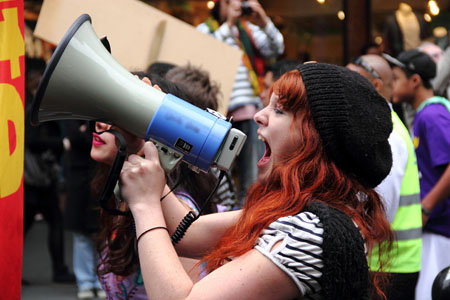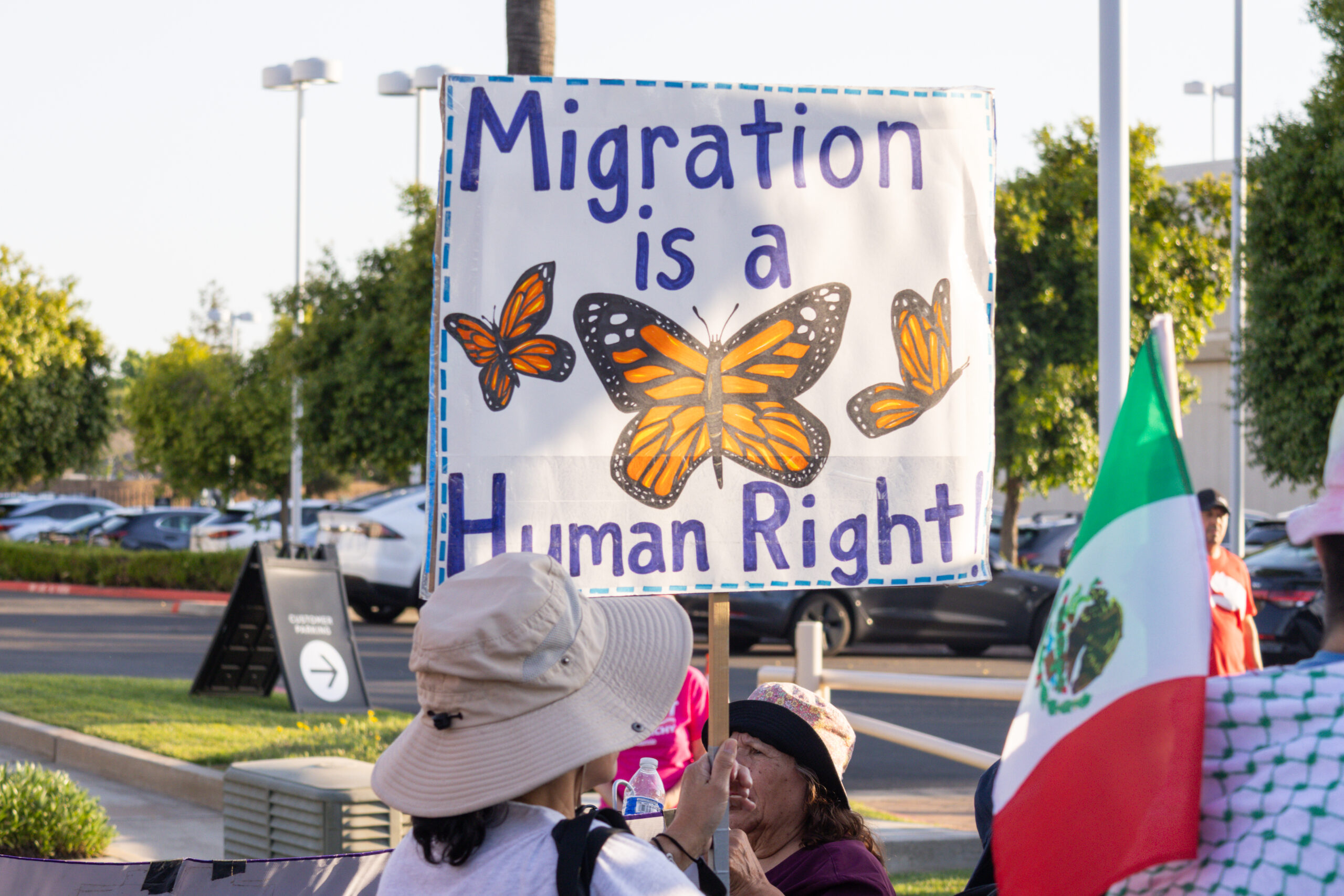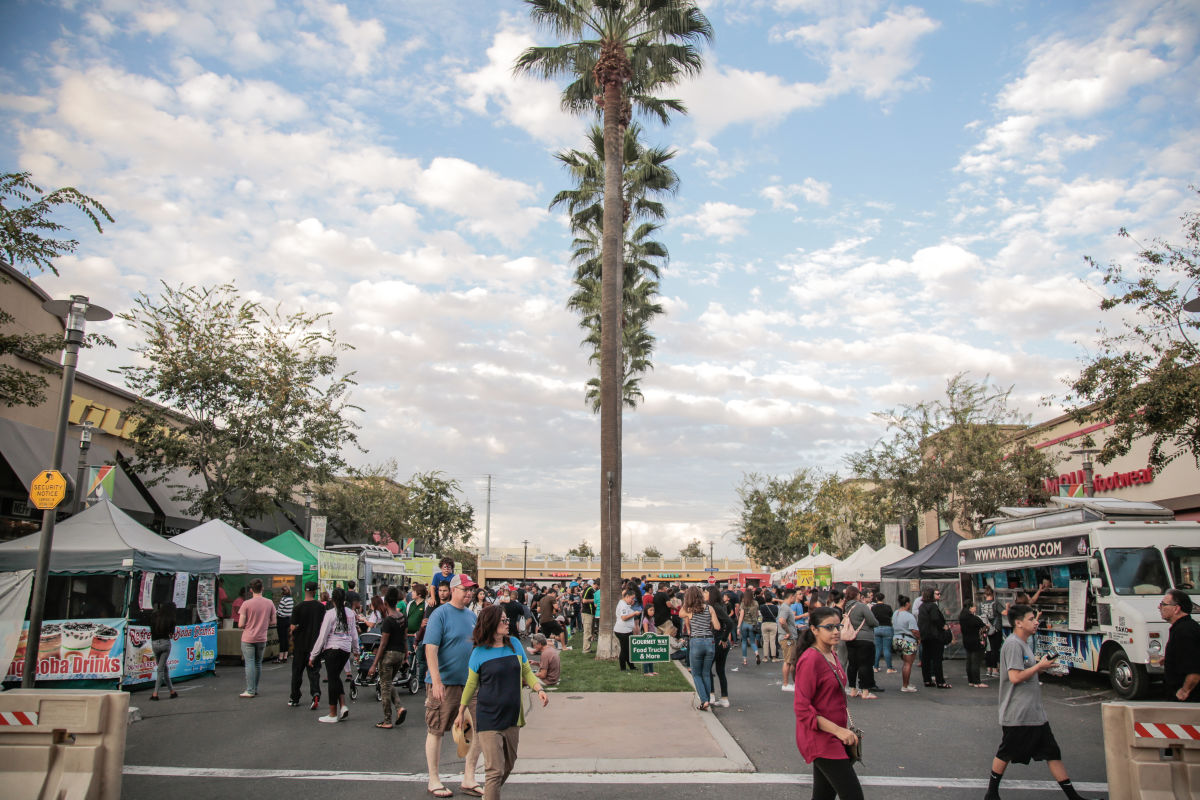
Youth Protester- Photo Credit: Jamie Doggett
We’ve all heard the expression “double bottom line” or even “triple bottom line,” meaning that an investment not only brings a return but also generates a second or third return, such as having a positive social impact.
What about a quadruple bottom line?
Invest in young people as activists on health issues and you may get a quadruple bottom line: a single investment that brings four times the impact. We’ll explore these impacts through examples from change efforts in City Heights, San Diego, which are being led by young people from various backgrounds, including Latinos, Southeast Asians and East Africans.
Impact No. 1: Health: When young people get involved in advocating for a healthier community, they become more aware of their own behaviors and take steps to get healthier. Take Leslie Renteria, a sophomore at Herbert Hoover High School. She got involved with the Mid-City CAN Youth Council in 2012. After joining, she cut back 90 percent of her soda consumption, and hasn’t had a soda in more than a month. Not only has she made personal changes in her life, she advocated for healthier food alternatives during youth meetings. To make that happen, she comes in before weekly meetings to help prepare fresh fruit for her peers. Better nutrition enabled her to make the varsity girls soccer team this fall, and has given her motivation to train even harder during the off-season in preparation for next year. For Leslie, a healthy community includes her home, her school, her soccer field, and her Mid-City CAN Youth Council meetings.
Impact No. 2: Influence: Youth activists influence other young people and their own families. Their willingness to stand up and push for change inspires others to do so as well. Angeli Hernandez got involved in the Mid-City CAN Youth Council as a senior at Herbert Hoover High School in late 2010. Since then, her confidence, knowledge, and passion have skyrocketed. She’s in her second year at San Diego City College, a local community college. She still attends youth meetings and brings along her 8-year-old sister, Anorali. Angeli has inspired two of her classmates to create a new youth-led initiative in the community called City Heights Walks, to inspire and support local at-risk children in the basketball league. These three young women have developed a plan and hope to change the lives of more than 80 young boys, starting with a pair of basketball sneakers. Angeli is also an activist on a statewide level. In February, she was appointed to the California Fund for Youth Organizing Advisory Board.
Impact No. 3: Community Change: Young people are change-makers. After being hit by a SUV while skateboarding, Marcos Olascoaga decided it was time his neighborhood built a bona fide skatepark. He and 20 of his fellow youth activists launched a campaign to bring this need to the San Diego City Council and won an initial commitment of city funds to build the park. The newly elected mayor of San Diego, Bob Filner, further cemented this commitment days after his election, attending a youth-led rally, in which he promised, “Skate se puede!” Marcos has since enrolled at California State University, Chico, but Marcos’ younger sister Rosa and the rest of the Mid-City CAN Youth Council are carrying on the campaign. Soon young people in City Heights will have a safe place to skate and exercise.
Impact No. 4: The Future: Veronica Terriquez, a professor at USC, has found that young people who get involved in activism in high school are five times more likely to remain committed as young adults to civic involvement than uninvolved youth, and three times more likely to be employed and college-going. Her research shows that when a community invests in youth leadership, it reaps the rewards for years to come.
So there you have it: an investment that results in young people changing themselves, influencing their peers and contributing to their community, now and in the future.
Can Wall Street beat that?
[divider]The examples above come from Mid-City CAN, a community-based organization supporting multi-cultural youth leadership in City Heights, San Diego. City Heights is one of 14 communities building healthy communities with support from The California Endowment.
The California Endowment’s Jim Keddy contributed to this blog.
Mark Tran is the Youth Community Organizer at Mid-City CAN. Jim Keddy is the Chief Learning Officer at The California Endowment.
To learn more please visit:
www.midcitycan.org/youth-council/about-youth-council
Facebook.com/midcitycan
twitter.com/midcitycan
![]()
by Mark Tran
Youth Community Organizer, Mid-City CAN


